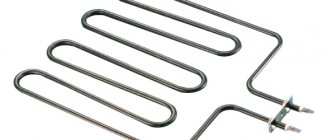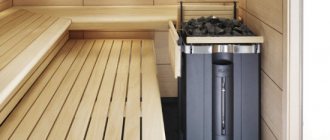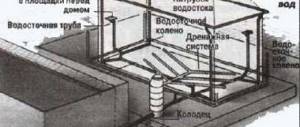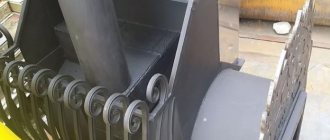Progress is such a capricious young man who constantly encourages the owners of country houses to improve their furnishings and compete with their neighbors in the same baths and saunas. Progress has led to the fact that today the old cast-iron heaters and primitive brickwork have been almost completely replaced by the electric sauna stove. And this is not bad, because these units have a number of advantages, although there are also specific features. All this will be discussed below.
What is an electric heater
Building a bathhouse or sauna is an expensive undertaking not only during the construction process, but also afterwards, during maintenance. After all, constantly maintaining the desired temperature in the oven is not a problem. The problem is to “heat it up” in a timely manner, without getting burned, without starting a fire, and even miraculously saving on bundles of firewood or gas fuel. This is where the idea of using electrics came from: compact and modern sauna stoves can even be installed in a home extension, observing, of course, the ventilation system. (See also: Sitemap)
The heating system inside the electric firebox is extremely simple: energy is transferred from heating elements, and there is also a traditional heater to which heat is transferred. However, how to choose a model, and will the electric stove justify itself in operation?
Dimensions
The smaller the sauna, the more important the size of the stove becomes. Low-power heaters are usually very modest in size. An example is the Harvia Compact stove - its width is 24.5-30 cm, depth 22 cm, height 54 cm. It weighs only 9 kg (without stones). Another model from the same company - Vega Compact - weighs even less: 7 kg and has dimensions: 28x29.5x50.5 cm.
IMPORTANT! Information on sizes is essential for selection, therefore it is always indicated in catalogs.
Yes, and one more interesting point: ovens of the same size (within the same line) can have different power. This allows the manufacturer to reduce production costs, and the consumer to choose a standard-sized heater for the volume of the steam room.
Further information will be useful to those who have already purchased a stove and need information on how to properly install and connect it.
Advantages of these ovens
Statistics confirm that sales of electric stoves exceed those of wood-burning heaters by 2 times. And there are a number of explanations for this:
- Small dimensions and convenient weight: such a sauna stove can be placed at the owner’s request in any corner, can be moved and can be easily washed and cleaned.
- The most important advantage is that for an electric-powered stove there is no need to install a chimney. And in general, the installation process is reduced to zero - except to ensure that there is an outlet nearby and additionally check the insulation of the electrical wiring.
- It only takes a few minutes to light a steam room equipped with such a convenient stove: turn it on and forget it, as they say, you can go about your business.
- Whatever you say about the benefits and aesthetics of wood-burning stoves with natural flames, they add risks. Firstly, a spark may escape and create a fire. And secondly, the floor around the electric furnace is always clean and not damaged by coals.
- The electric oven allows you to select the voltage supply mode - single-phase 220V or three-phase 380V. Which is important when redistributing energy in the house and on the site.
(See also: Ermak sauna stoves)
(See also: Do-it-yourself oven in the yard)
In a word, simple and easy to maintain, these units open up many possibilities in management. For example, practicality and always well-groomed appearance, remote start using a remote control or by pressing one button on the control panel. Modern stoves completely eliminate the possibility of short circuits and are protected against overheating and voltage surges in the network. Individual samples can even recognize a comfortable temperature and maintain it at the same level, accumulating thermal energy. As a result, any room warms up evenly and quickly, which is especially appreciated in the construction of public and municipal fitness centers, baths and steam rooms.
Cost of heating with electricity in a house
The most expensive expense item in a private home is the cost of heating with electricity, if you have heating with an electric boiler. With the cost of 1 kilowatt per hour around 3 rubles, let’s calculate how much it will cost.
For simplicity, let’s calculate the area of the house as 100 square meters. And then everyone will be able to calculate how much it will cost him to heat his house with a specific area.
While there is no gas and you heat with electricity? Prepare 50-60 thousand rubles for the heating season for a house of 100 sq.m.
For every 10 square meters of a well-insulated house, you will need 1 kilowatt of electric boiler power. For 100 square meters you will need a boiler with a capacity of at least 10 kilowatts.
Electricity consumption for heating with such a boiler power will be 10 kilowatts per hour in cold weather - the boiler will operate continuously. Total 240 kilowatt-hours per day. If you have frosts below -30C for a month, then your electric boiler will consume 7200 kilowatt-hours of electricity. Isn't it weak? More than 7 megawatts per month! Which will cost you more than 20 thousand rubles just to heat your home.
However, in practice, such frosts occur in central Russia and even in the Urals for no more than 1-2 weeks during the winter. Sometimes, in some winters, however, there are prolonged frosty periods, as, for example, in the winter of 2013.
The rest of the time, when winter temperatures fluctuate at -15C -20C, the boiler operates half the time. That is, your approximate cost of heating a house of 100 square meters will be equal to 10 thousand rubles per month.
These are the winter months - December, January and February. In November and March, the boiler will operate only 8 hours a day at full capacity, or gradually consume only a third of the electricity. This means that in November and March your electricity costs for heating your house will be approximately 6-7 thousand rubles.
In October and April, the cost of heating with electricity will be completely insignificant - 2-3 thousand rubles.
To summarize, the total cost of heating a well-insulated house with an area of 100 square meters in central Russia and the Urals will be 50-60 thousand rubles for the entire heating season. And the practice of heating with electricity confirms this.
Of course, if you have gas or heat your house with a solid fuel boiler, then you can omit these calculations.
Are there any disadvantages?
Of course, stoves for baths and saunas based on electric heating elements do not meet such high parameters of environmental friendliness and health benefits as wood-burning heaters do. There won't be any harm, of course. But the beneficial resins released during the wood burning process will not enter the air. Some owners complain that the air in the sauna is dry when using an electric stove, but this is easy to fix. (See also: Electric hot water boilers: advantages, disadvantages and types)
If we compare wood-burning and electric heaters further, then the first one is not tied to a power source and can be heated even in the absence of electricity. Wood-burning stoves have a greater output of thermal energy, because during prolonged heating, cast iron, brick or other materials take on the heat transfer, accumulate and build up heat. Of course, an electric furnace cannot be used to heat water in a bathhouse, having, in principle, less power. But all this cannot be called a direct disadvantage; rather, it is a cost of the system, which owners must be prepared for.
Cost of lighting in a private house
If you install energy-saving lamps with an average power of 13-15 watts in all the lamps in your home, which is equivalent to a regular lamp of 75 watts, then your costs for lighting your home will be within very reasonable limits.
In winter, lighting operates for 10 hours a day, and in summer – for 3-5 hours, excluding external lighting. Of course, if external lighting is installed correctly and equipped with light and motion sensors, then external lighting will work no more than internal lighting.
Modern sensors make home and garden lighting efficient and cost-effective.
So, you have a house of 100 sq.m., in which you have approximately 20 lamps with a power of 15 watts. That's only 300 watts per hour. With an average lighting time of 7 hours (both in winter and summer), this is only 2 kilowatts per day or 60 kilowatts per month.
That is, the cost of lighting in a private house of 100 square meters will amount to no more than 200 rubles per month.
The heating system circulation pump, boiler automation, VOC compressors, televisions, satellite receiver, computers, gate drives, washing machine, phone chargers - all these are consumers of electricity in a private home. And they all require kilowatts, although not much. It will cost you approximately 200 to 300 rubles per month to maintain these devices.
Parameters to pay attention to
So, when choosing stoves for baths and saunas based on electricity, you need to be able to understand their technological characteristics. This is much easier than studying the patterns of brickwork or studying the grades of steel and cast iron by their composition.
However, don't lose sight of:
- The cubic capacity of the heated room: to calculate this indicator, you need to know the area and height of the walls of the steam room.
- Network voltage: it is best to install an uninterruptible power supply to avoid unexpected breakdowns in the event of power surges.
- Pay attention to the power that an electric furnace offers. The indicator will again depend on the needs of the heated room.
- Choose imported models. Even despite the ominous-sounding word “imported”, it is much better to take a Finnish, French or German stove and save on further repairs than to spend your whole life with a domestic electric heater or throw a Chinese one in the trash after a year.
- Finally, the type of furnace heater is either tubular, which is capable of reaching a threshold of 800 degrees, or tape. The latter is safer, lasts longer and is economical in energy consumption. Although some models combine both types, thereby warming the room 2 times faster.
(See also: Wood-burning sauna stoves)
Stoves can also be classified according to the remote control, as well as according to the heating time of the steam room. In this regard, the wood-burning sauna stove does not lose, but it limits itself in options. Here you can set the heating temperature of the heater and monitor the thermostat indicators, turning up the heat or turning it down in time.
Power calculation
It is easier to calculate the power of an electric stove than a wood stove. The manufacturer indicates the power in kilowatts in the passport. The consumer can only determine the volume of his steam room in order to get his bearings. But! There is a formal volume, and there is an adjusted volume after adding coefficients - for example, for surfaces without thermal insulation, for heating adjacent rooms in winter, etc.
So, tiles, glass, stone - you need to calculate their surface area, multiply by 1.2 and add to the formal volume.
We count the glass door to the steam room separately - just add an extra one and a half cubes to the existing numbers.
Then it’s simple: for one kilowatt of stove power – one cubic meter of steam room space if the stove has heating elements, and one and a half cubic meters if there are tape heaters.
I want more articles:
Appearance and cladding
The sea of models offered on the market differ in size, interface, and variations of facing material. And even the placement method: you can install the electric oven in the corner of the room or hang it on the wall using mounting brackets. Or you can make an electric oven the central element of the room. In this case, finishing will play an important role.
Some manufacturers offer a sauna stove-fireplace lined with natural stone. In addition to aesthetics, this solution also has a protective function. For example, a coil or talc-containing rocks absorb the radiation of infrared rays and control temperature changes. They also carry an additional load, accumulating thermal energy and releasing it to the room during the cooling process of the furnace.
Although you don’t have to spend money on such a shocking look, if you are going to place the stove further away in the corner, choose simple stainless steel models. At the same time, you will save almost 50% of the cost, which is important if the stove is chosen for a public steam room for commercial gain. Moreover, the stones are already laid in the heater.
Types of electric stoves for baths
The power of the stove for heating a bath is calculated based on the dimensions and parameters of the steam room. After all, the main task is to create the required temperature for this particular room. It is calculated by cubic capacity, but when calculating, you still need to take into account several additional factors and sum up the resulting figures. As a result, we obtain the furnace performance required for this type of steam room.
One line of sauna stoves usually has several modifications of different power
It has long been established that, on average, heating one cubic meter of steam room requires a thermal power of 1 kW. Therefore, to begin with, you need to know the length*width*height of the steam room. By multiplying these values in meters, you get the volume of the room, and, therefore, the minimum performance of the heating unit.
For example, a steam room has dimensions of 3 m * 2.8 m * 2.8 m. Multiplying, we get 23.5 cubic meters. In principle, when choosing, you can focus on this figure... But not everything is so simple. The following points must also be taken into account:
- Is there a window in the steam room? If there is, you need to add 3 kW for each square meter of window area (this is if the glazing is single), if the glazing is double, apply a reduction factor of 0.5. For example, there is a window 50*40 cm with one glass. You need to add 0.5 m * 0.4 m * 3 kW = 0.48 kW.
- If there are brick walls in the steam room, add 1 kW to each square (the large heat capacity of brick requires additional heating).
- If you have an uninsulated door (wooden or glass), you need to add about 10% more power reserve.
- Degree of insulation. If everything is done according to the recommendations (thickness of insulation), with a vapor barrier, the joints are taped, no changes can be made. If the insulation is so-so, you can add 20-30% to the already found power.
- If the stove is heated from an adjacent room, it is also necessary to increase the required productivity by at least 10%.
In general, sometimes you get a pretty solid increase. But for a bathhouse it is better to have a stove with more power than less: it is better to stifle the combustion than not be able to heat the steam room to the required temperature. The supply is especially important for periodic baths. In winter, within a week, they freeze through. When putting them into soaring mode, the reserves that seem completely unnecessary in the summer will come in handy.
Another advantage of the furnace’s performance reserve is that there is no need to heat it red hot. With such intense heating, the furnace usually burns out quickly. To prevent this from happening, a fairly decent supply is needed.
If the stove is heated from an adjacent room, its power should be 20-30% higher than the calculated one
Another advantage of higher-power sauna stoves can be considered a larger stone stack, which means more comfortable steaming conditions and longer maintenance of temperature in the steam room. There are also disadvantages. This is the price and size. Both are not fatal, but unpleasant.
The firebox material is metal, and its type and brand affect the cost of the equipment. Cast iron makes the firebox heavier, it takes longer to warm up, but it also takes longer to cool down. The housing is also made of heat-resistant grades of stainless and galvanized steel. The heater is made of metal; its walls can be solid, wicker, or lined with natural stone.
The choice of firebox and heater material depends on personal preferences and the ability to spend a certain amount. The presence of a steam generator increases the cost of the device, but it makes it possible to obtain a large amount of wet steam. This is important for fans of steaming with a broom. An electric heater without a steam generator may not provide exactly as much humidity as required.
The heating time of the room and stones, as well as the amount of steam, depend on the power of the oven. As a rule, it also affects the external dimensions: more powerful devices have a large heating element and, accordingly, the size of the case. The required parameters are determined by the volume of the steam room. The greater the power of the electric sauna furnace, the greater the volume of the steam room that it can heat to the required temperature.
Collapse









